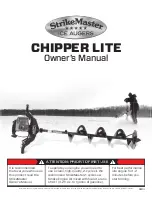
4
Preparing the client
4.1
Inspecting the client’s ear(s)
1. Position the client so that you can easily access the client’s ear(s).
2. Grasp the pinna and gently pull it back and slightly up and away from the client's head.
3. Inspect the ear canal and make sure that you can see the ear drum.
If you can see apparent narrowing of the ear canal, it may be blocked by vernix or debris, or it may not be straight.
4. If the ear canal is blocked, for instance by vernix or debris, the outcome of the procedures may be affected.
Clean the ear canal if required.
4.2
Proper transducer placement
Headphones
1. Loosen the headband and place both the left and right side of the headphones simultaneously.
2. Make sure that the blue indicator is on the left ear and the red indicator is on the right ear. The center of the head-
phone diaphragm should be directly opposite the opening of the ear canal for the left and right side.
Note
•
If the headphones are not placed properly, there is risk of causing the ear canal to collapse which will result in
elevated thresholds.
3. Ask the patient if the headphones are comfortable.
4. Tighten the headband while holding the headphones in place with your thumbs.
5. Examine the placement of the headphones to make sure they are level, and properly positioned.
Insert Earphones
The insert earphones are color-coded:
•
the blue indicator for the left ear,
•
the red indicator for the right ear.
1. Select the largest foam eartip that will fit into the patient's ear.
If the eartip is too small the sound will leak out and the sound level will not be accurate at the eardrum.
Insert earphones have greater attenuation between ears especially at the low frequencies; this reduces the need for
masking.
2. It is best to clip the insert earphone transducers behind the child or on the back of their clothing and then fit the
foam eartip into the child's ears.
If the foam eartip is a little too large, consider cutting it down to make it a little smaller.
Madsen A450
61
4 Preparing the client
















































